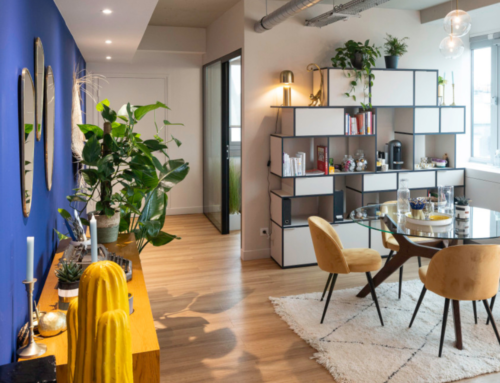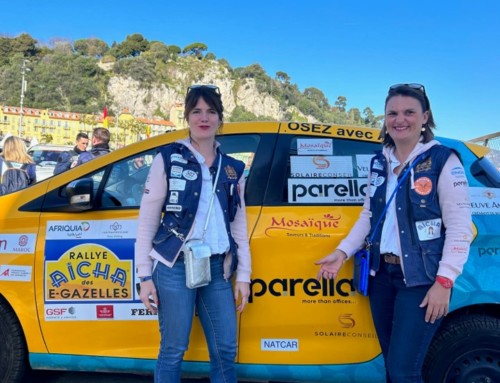Hybrid work: 7 concrete solutions to keep employees engaged
The concern about the implementation of hybrid work is certainly important. Are we going to see a breakdown in corporate culture?
The evils would then follow one another: health crisis, hypothetical return to the office and disappearance of the link between the company and its employees. Is this a serious time?
Phew no, and the between Frédéricke Sauvageot (Director of Innovation and Work Environment Development - Orange) and Thibaud Poirier (Manager People and Transformation - Parella) are reassuring.
Hybrid work is certainly developing, combining on-site and remote time. It provides employees with flexibility, autonomy and even empowerment, which for some are strong expectations today, while for others they are essential elements of new employment contracts.
Faced with this situation, companies are moving forward at a rapid pace.âwith quite different postures.
Back to the corporate culture
Corporate culture is nourished by tangible elements that are part of the real estate (layout, location, look & feel, etc.). It also takes into account its share of intangible elements (rituals, sense of collaboration, principles of solidarity, onboarding, communication, management), to create a feeling of living together. It is clear that all of these themes are being challenged by the hybrid work organization that is now part of our daily lives. Moreover, the "decrease in social interactions", the "lesser cohesion between employees", but also "the erosion of the feeling of belonging to the company" are the main concerns of HRDs about hybrid work, according to the ANDRH study of February 2022.
How can we keep a corporate culture alive when the workplace is between 2 and 3 days away from home? When the relationship between colleagues or with management is lived at a distance without being able to enrich itself through contact with our peers or our managers?
The workspace as a lever for transformation
At Orange, the hybrid mode was already well established before the pandemic. It has naturally accelerated since then. New principles have been put in place around a culture of sharing space that has replaced a culture of ownership. It is true that managers sometimes still have difficulty à to consider space as a lever for the transformation of their working methods.
But this is not unique to Orange, because this culture of sharing, which is built on collective values, is coming up against a more individualistic approach that was the norm. The same is true of the services, for which divergent strategies are being put in place.
Some companies want a uniform and egalitarian approach in order to offer the same services to everyone, regardless of their site (Paris / outside Paris / large site / small site) and their location (office / home). Others, on the contrary, have an approach that aims to strengthen the attractiveness of the headquarters by centralizing services or equipment there. These are different strategic approaches that aim to strengthen the link between the company and its employees by taking into account the company's DNA.
These questions, and the answers provided by companies, are based on all tangible and intangible aspects. But the essential challenge of reappropriating spaces lies less in their design (provided that the uses and occupancy ratios are well thought out) the organization of work and the associated management.
"Space must be perceived in its strategic dimension, as a "resource" at the service of the managerial project. Managers thus become the conductors of the transformation to find a harmony of the whole" comments Frédericke Sauvageot. In addition to the aspects linked to to productivity, thehe office is also taking also a new dimension by guaranteeing the well-being of employees.
Concrete solutions
What are the concrete solutions proposed to maintain the corporate culture, the collective and the commitment of employees?
7 Avenues to explore :
- To focus on giving back meaning, multiplying communication channels, by combining visual communication on site, physical meetings in the offices and by broadcasting a strong digital communication for those in telecommuting, à repeated again and again => reinforce the MEANING
- Share the company culture on the intranet, on all platforms to easily attract employees and candidates (LinkedIn...), to help them learn about the company and to empower their own teams and strengthen social ties... and make them want to! => recall the DNA
- Embodying culture in workspaces by moving from individual, even individualistic, personalization, à a collective personalization embodying the territory of a team and "decorated à its image. => develop the APPROPRIATION
- Make people want to come back to the office by designing spaces adapted to the hybrid mode that combine all modes of presence and offer a spatial and service offer "better than at home".than at home". => think USES
- Transform uniform and aseptic spaces by bringing in design, often from the world of coworking or from certain emblematic sites, without forgetting the functional and new furniture => give priority to the BEAUTIFUL
- Use technologies as tools to recreate collectives and facilitate daily life. => more SIMPLICITY
- Thinking about the sound and even olfactory paths of the occupants. The sound path, as it is defined in theédeveloped at Orange, has a double challenge: to avoid the feeling associated with noise pollution and to build atmospheres according to the spaces and uses: dynamic zone, silent zone and exchange space... => to encourage a global SENSORY experience
Certainly the hybrid work has put our sense of human relationships and our need forand also our need for interaction. Fortunately, we are not without solutions, It is up to us to reinvent the work of tomorrow...
Ludovic Legendre Associate Director of People & Transformation
Follow us on Linkedin to benefit from the next articles, between deciphering and market views of our experts.






